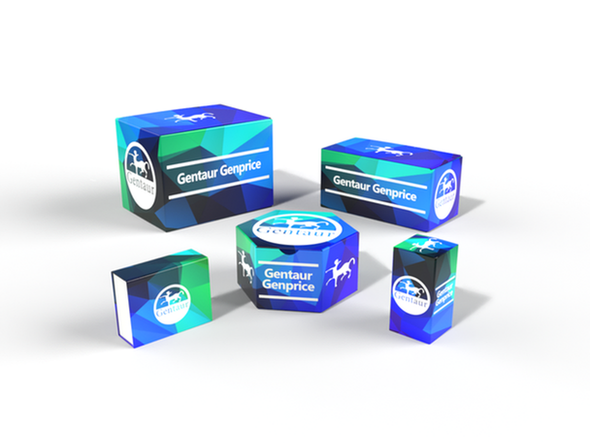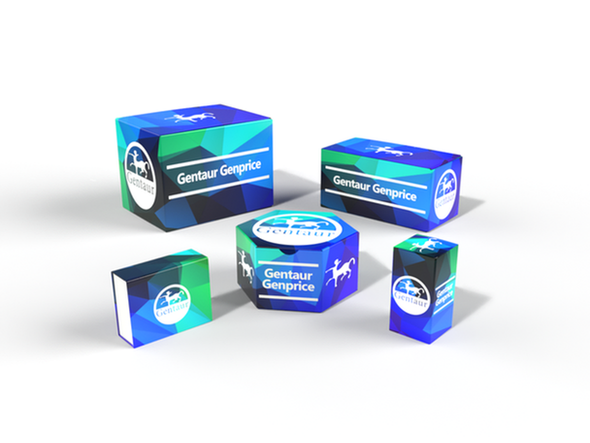749
Rat Transthyretin (TTR) ELISA Kit | KTE100031
- SKU:
- 749-KTE100031
- Availability:
- Usually ships in 5 working days
Description
Rat Transthyretin (TTR) ELISA Kit | KTE100031 | Gentaur UK, US & Europe Distribution
Application: This Rat Transthyretin (TTR) ELISA Kit employs a two-site sandwich ELISA to quantitate TTR in samples. An antibody specific for TTR has been pre-coated onto a microplate. Standards and samples are pipetted into the wells and anyTTR present is bound by the immobilized antibody. After removing any unbound substances, a biotin-conjugated antibody specific for TTR is added to the wells. After washing, Streptavidin conjugated Horseradish Peroxidase (HRP) is added to the wells. Following a wash to remove any unbound avidin-enzyme reagent, a substrate solution is added to the wells and color develops in proportion to the amount of TTR bound in the initial step. The color development is stopped and the intensity of the color is measured.
Detection Method: Colorimetric
Conjugate: N/A
Sample Type: Cell culture supernatants#Serum#Plasma#Other biological fluids
Assay Type: Multiple steps standard sandwich ELISA assay with a working time of 3-5 hours. It depends on the experience of the operation person.
Kit Component: • Rat Transthyretin microplate
• Rat Transthyretin standard
• Rat Transthyretin detect antibody
• Streptavidin-HRP
• Standard diluent
• Assay buffer
• HRP substrate
• Stop solution
• Wash buffer
• Plate covers
Features & Benefits: Rat Transthyretin (TTR) ELISA Kit has high sensitivity and excellent specificity for detection of Rat TTR. No significant cross-reactivity or interference between Rat TTR and analogues was observed.
Calibration Range: Please inquire
Limit Of Detection: Please inquire
Usage Note: • Do not mix components from different kit lots or use reagents beyond the kit expiration date.
• Allow all reagents to warm to room temperature for at least 30 minutes before opening.
• Pre-rinse the pipet tip with reagent, use fresh pipet tips for each sample, standard and reagent to avoid contamination.
• Unused wells must be kept desiccated at 4 °C in the sealed bag provided.
• Mix Thoroughly is very important for the result. It is recommended using low frequency oscillator or slight hand shaking every 10 minutes.
• It is recommended that all samples and standards be assayed in duplicate or triplicate.
Storage Instruction: The unopened kit should be stored at 2 - 8°C. After opening, please store refer to protocols.
Shipping: Gel pack with blue ice.
Precaution The product listed herein is for research use only and is not intended for use in human or clinical diagnosis. Suggested applications of our products are not recommendations to use our products in violation of any patent or as a license. We cannot be responsible for patent infringements or other violations that may occur with the use of this product.
Background: TTR was originally called prealbumin because it ran faster than albumins on electrophoresis gels.Prealbumin is produced by the choroid plexus, by pancreatic islet cells in the embryonic yolk sac, and by enterochromaffin cells in the gastrointestinal mucosa, but the liver is quantitatively the most important source.9 Liver production is maintained until late in liver disease. Hydration status does not affect prealbumin levels. A negative acute phase reactant, the prealbumin level will transiently decrease in the presence of inflammation and in the immediate postsurgical period. Serum levels also decline in patients with conditions associated with protein malnutrition, such as malignancy, cirrhosis, protein-losing enteropathy, and zinc deficiency.
Alternative Names: TTR; HsT2651; PALB; TBPA; prealbumin; amyloidosis type I; thyroxine-binding prealbumin
Search name: TTR; HsT2651; PALB; TBPA; prealbumin; amyloidosis type I; thyroxine-binding prealbumin
Tag: TTR










